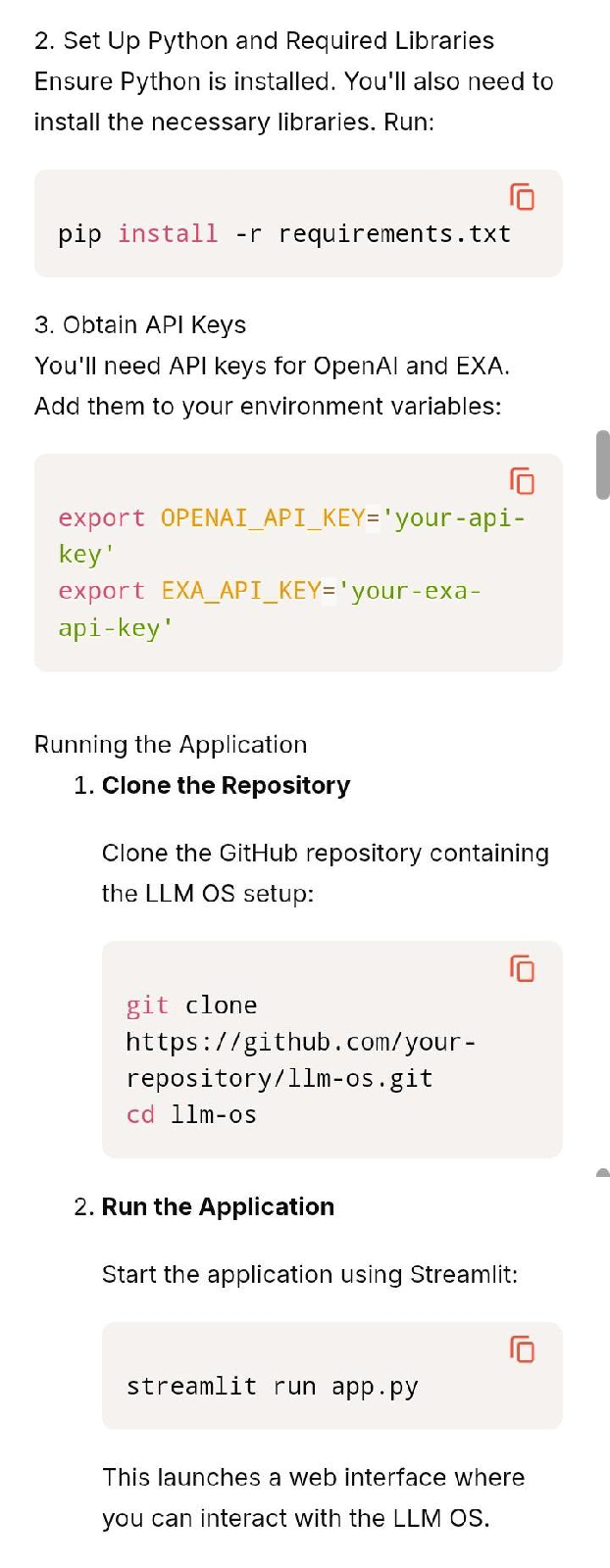Building an LLM Based Operationing System - A Step by Step Guide
Building an LLM-Based Operating System: A Step-by-Step Guide
Introduction to LLM-Based Operating Systems
The concept of an operating system (OS) centered around a large language model (LLM) is revolutionary. Instead of traditional kernels managing hardware resources, this LLM OS uses an LLM as its core, handling tasks through interactions and tools. This blog will guide you through creating a basic version of such an OS using the f data library and GPT-4.
Setting Up Your Environment
1. Install Docker
Docker is essential for running PostgreSQL as a vector database. Install Docker on your system:
- **Mac/Linux**: Use your package manager or download from [Docker's official site](https://www.docker.com/).
- **Windows**: Install Docker Desktop from the same site.
2. Set Up Python and Required Libraries
Ensure Python is installed. You'll also need to install the necessary libraries. Run:
```bash
pip install -r requirements.txt
```
3. Obtain API Keys
You'll need API keys for OpenAI and EXA. Add them to your environment variables:
```bash
export OPENAI_API_KEY='your-api-key'
export EXA_API_KEY='your-exa-api-key'
```
Running the Application
1. Clone the Repository
Clone the GitHub repository containing the LLM OS setup:
```bash
git clone https://github.com/your-repository/llm-os.git
cd llm-os
```
2. **Run the Application**
Start the application using Streamlit:
```bash
streamlit run app.py
```
This launches a web interface where you can interact with the LLM OS.
Exploring the Tools and Features
The LLM OS comes equipped with several tools:
- **Calculator**: Perform basic arithmetic operations.
- **File Tools**: Manage files and documents.
- **Web Search**: Use DuckDuckGo for internet searches.
- **Shell Commands**: Execute system commands.
- **Stock Analysis**: Generate investment reports using Yahoo Finance.
Adding Knowledge to the System
You can enhance the OS by adding external knowledge. For example, add a webpage:
1. Add a URL
Navigate to the knowledge section and enter a URL. The system processes and stores the information.
2. Query the Knowledge Base
Once added, you can query the stored knowledge. For instance, asking about a specific topic will retrieve relevant information from the added content.
The Role of Prompt Engineering
Effective interaction with the LLM OS relies on well-crafted prompts. For example, to generate an investment report:
```plaintext
Can you create an investment report on Tesla?
```
The system gathers data, processes it, and generates a structured report. This demonstrates the power of prompt engineering in shaping the OS's functionality.
Conclusion and Future Thoughts
Building an LLM OS is a glimpse into the future of computing, where LLMs could replace traditional kernels. This project showcases the potential of integrating AI into OS design. While it's still in its early stages, the possibilities are vast.
Would you like to see more projects like this? Let me know your thoughts in the comments!
---
This guide provides a foundational understanding of creating an LLM OS. With further development, such systems could become mainstream, redefining how we interact with computers.



Comments
Post a Comment